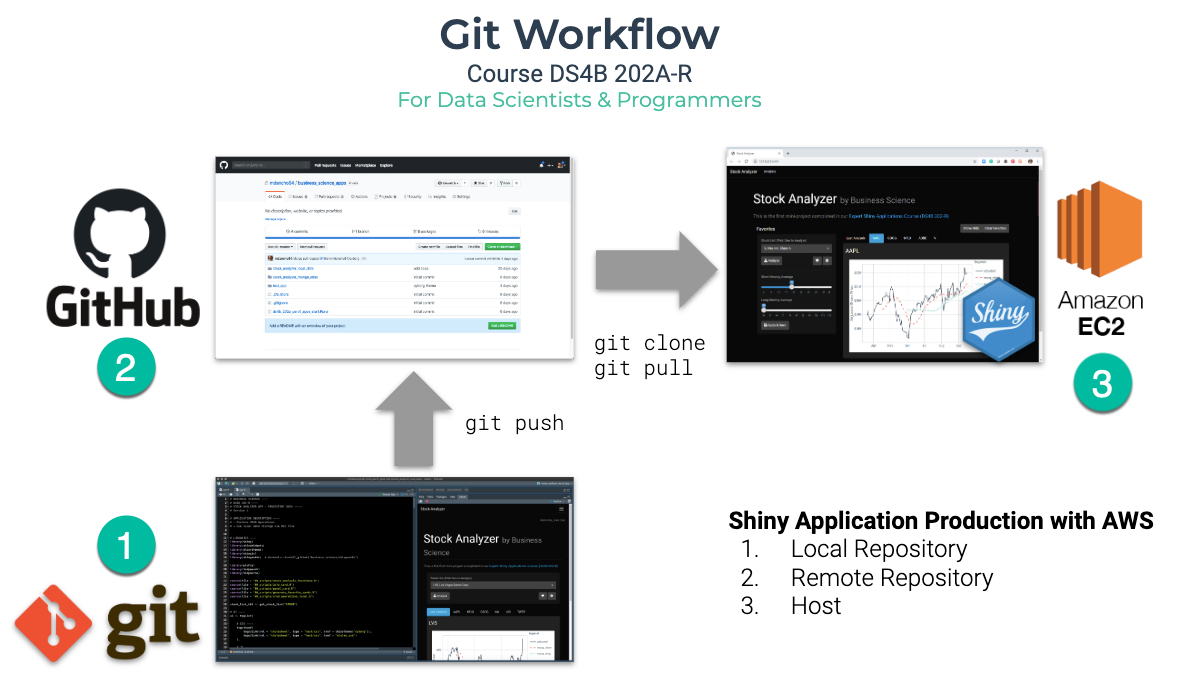Chapter 14 Git Workflow
Git and GitHub combine to facilitate a workflow for file transfer. This process works well for deploying Web Applications on AWS.
14.1 Workflow

Git and GitHub facilitate a workflow for developing and deploying applications:
Application Development begins locally (Local Repository) on your computer. Changes are tracked with Git.
Code is pushed to GitHub, a Remote Repository designed for sharing version controlled files.
The remote repository can be cloned to an AWS EC2 Instance, which is a Host for the production application.
14.2 Definitions
GitHub- An online community for storing and sharing version-controlled software files. Has Public and Private repositories.Repository(repo) - A group of files that are version controlled bygit. Every change made to any of the files is tracked and can be differenced from the working version and any previous version that was committed.Remote Repository- A remote repository is one that is stored in a shared location typically on GitHub (or BitBucket, GitLab, Azure, etc).Local Repository- The local repository is one that is stored on your computer or your EC2 Server.
commit- Creates a checkpoint for version controlling your file. As you develop, you should commit often because committing creates a safety harness (rock climbing analogy). The more often you commit, the shorter your fall when you screw something up.pushandpull- These actions are used to send files to (push) and from (pull) your remote repository.clone- Used to setup a local repo from a remote repo. We do this commonly when setting up software on EC2 servers.branch- Branches are used for creating prototype software (development version) without modifying the working (production version) until you are ready. Once ready, wemergethebranch(development version) with themaster(production version).


Have a question? Leave a comment.